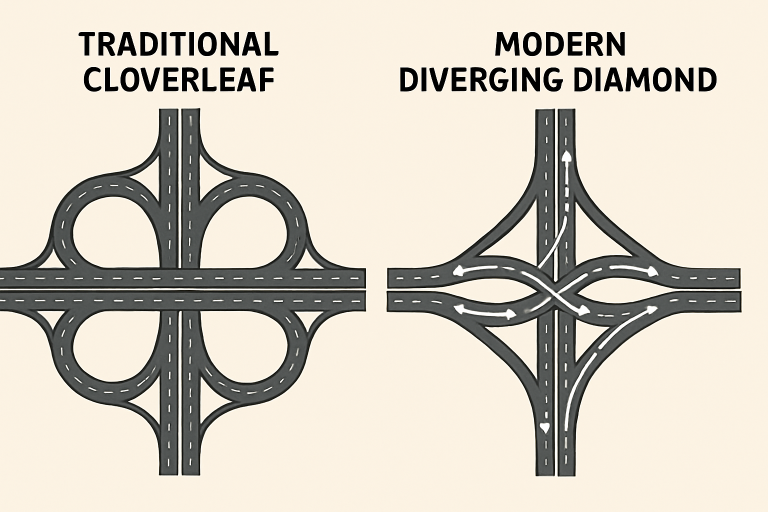Key Takeaways
- Innovative interchange designs such as Diverging Diamond Interchanges (DDIs) can reduce overall crash rates by more than 50%.
- Traditional designs often contain numerous conflict points, making them susceptible to rear-end, side-impact, and merging accidents.
- Thoughtful interchange design, ongoing maintenance, and robust public education are crucial for enhancing road safety.
Highway interchanges are engineering marvels that keep traffic moving smoothly and safely across busy road networks. However, as anyone who’s traveled through the notorious Orange County accident hotspot knows, the design and operation of these interchanges can dramatically impact road safety. Interchanges are more than concrete and steel: they are critical nodes that determine how safely drivers can merge, exit, and transition between highways.
Understanding how interchange designs work and their safety challenges helps transportation professionals, planners, and drivers make safer decisions. Poorly designed or outdated interchanges increase accidents, while innovative layouts can cut crash rates. With over 38,000 U.S. road deaths annually, safe interchange design is more important than ever. In high-traffic and complex areas like California, diverse terrain and heavy traffic add to challenges, prompting agencies to update older designs and adopt new ones to reduce conflicts and confusion. Upgrading infrastructure isn’t enough; driver education, clear traffic controls, and maintenance are essential for safety improvements. A comprehensive approach is needed to turn accident-prone areas into safer roads for everyone.
Traditional Interchange Designs and Safety Challenges
The earliest highway interchanges in the US, mainly cloverleaf and diamond designs, were built to move more cars with fewer signals. While they increased travel speed, they brought safety issues. Points where vehicles merge, weave, or cross increase crash risks, especially at busy junctions or rush hours. For example, cloverleafs with looping ramps force entering drivers to merge with fast off-ramp traffic, a dangerous situation. Diamond interchanges without signals or lanes can cause backups and sudden brakes, raising rear-end collision risks. The Federal Highway Administration reports that poorly designed or congested interchanges are responsible for many urban freeway accidents each year.

Innovative Interchange Designs Enhancing Safety
To counter the dangers inherent in older interchange designs, transportation engineers have turned to new concepts that minimize conflict points and driver confusion. One of the most promising innovations is the Diverging Diamond Interchange (DDI), first adopted in the United States in the late 2000s. A DDI allows vehicles to temporarily cross to the opposite side of the road within the interchange, thereby eliminating the danger of left turns across oncoming traffic. As a result, DDIs have been shown to slash crash rates by more than half and reduce fatal or injury crashes by up to 70%.
Other innovative approaches, such as Single Point Urban Interchanges (SPUIs) and roundabout interchanges, also streamline traffic flow and improve visibility. These modern layouts often use advanced signaling and signage to further reduce confusion. The combination of better geometry, clearer guidance, and fewer rapid lane changes creates a safer environment for all road users.
The Role of Driver Awareness and Education
Even the safest interchange design depends on driver understanding. New configurations often involve a learning curve. In Missouri and other states, public education campaigns—like instructional videos, media outreach, and signage—help drivers understand new traffic patterns, reducing confusion and increasing safety. Ongoing driver education is vital. For example, New York’s Department of Transportation provided video guides and best practices when implementing DDIs in Orange and Monroe Counties. Combining infrastructure upgrades with outreach reduces accidents by ensuring drivers are well-prepared and less prone to mistakes.
Conclusion
As traffic volumes rise and transportation systems become more complex, the design of highway interchanges remains a linchpin of road safety. States that have adopted innovative interchange designs, such as DDIs, have seen dramatic improvements in both congestion and accident rates. However, the pathway to safer roads requires more than just novel engineering—driver education, transparent communication, and continued maintenance are fundamental. As cities and states work to modernize their networks, these strategies offer a proven roadmap to reducing accidents and protecting drivers at every juncture.


